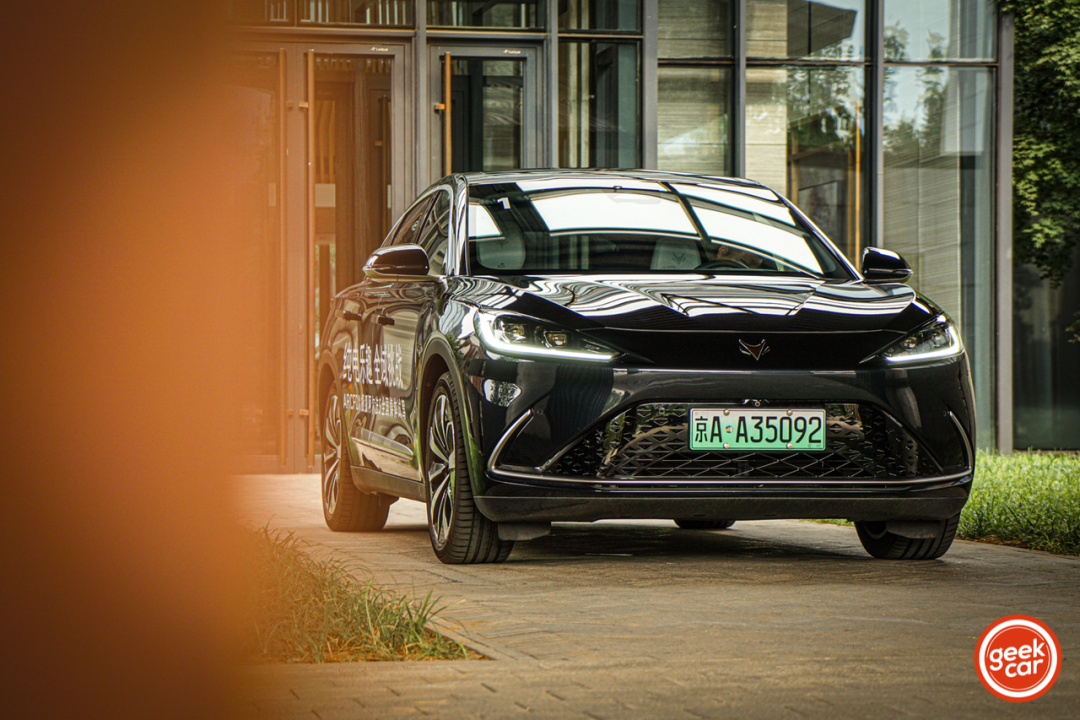Author: Boosted Chubby with Twin Turbo
If you ask which is the most popular vehicle at the Shanghai Auto Show this year, the answer must be the ARCFOX Alpha S from the ARCFOX brand. The main reason for its popularity is the Huawei Hi version, which features a Huawei L4-level autonomous driving solution. Despite the ARCFOX Alpha S being the driving force behind autonomous driving, it is Huawei that has garnered more attention.
So the question arises:
Q: Would you buy the Huawei Hi version of the ARCFOX Alpha S for 400,000 yuan ($62,240)?
A: I believe there are only a few people who will (P.S. no refutation accepted).
Q: Then how does the standard version of the ARCFOX Alpha S, which does not come with a Huawei Hi, perform?
A: Today, I tried it out for everyone.
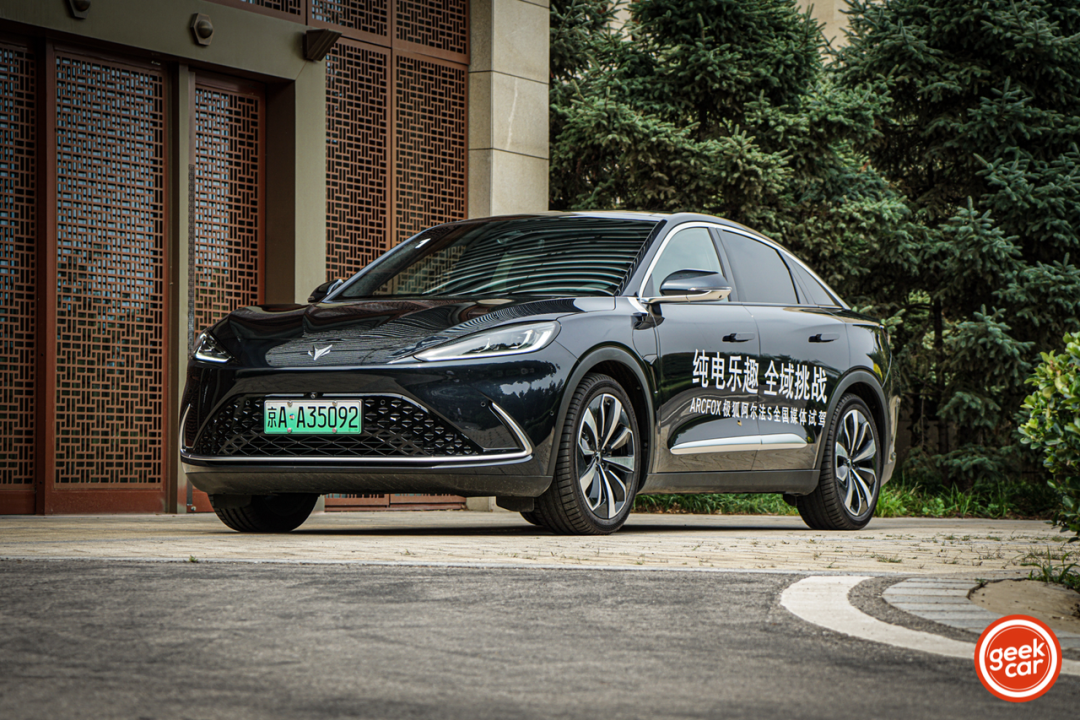
This time I test-drove the ARCFOX Alpha S 603H version, which is the top-of-the-line model of the standard version, with a subsidized suggested retail price of 344,900 yuan ($53,750). So let’s take a look at the basic information of this car:
-
The vehicle measures 4,930 mm in length, 1,960 mm in width, and 1,599 mm in height, with a wheelbase of 2,915 mm, positioning it as a large electric liftback sedan.
-
It is equipped with an 811 three-element lithium battery provided by Korea’s SK, with a battery capacity of 93.6 kWh and an NEDC range of 603 km.
-
It adopts a front and rear dual-motor four-wheel drive layout, with a maximum system power of 320 kW (about 435 horsepower), maximum torque of 720 N·m, and a zero to 100 km/h acceleration time of 4.2 seconds.
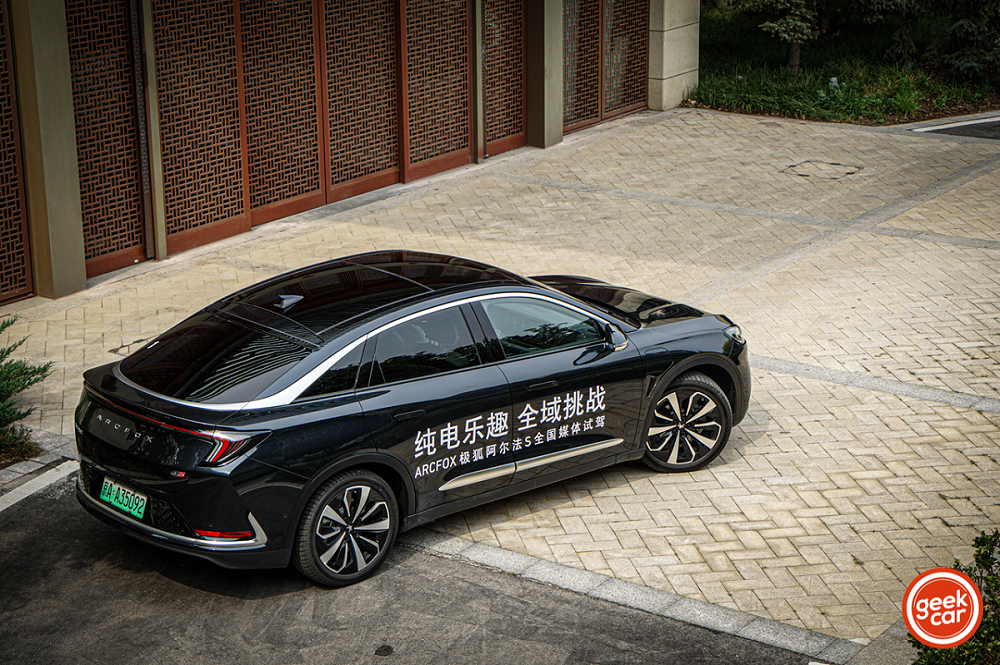
I had test-driven the first model of the ARCFOX brand, the Alpha T, before, and I tested the ARCFOX Alpha S for a day this time. I want to share with you the advantages and shortcomings of the ARCFOX Alpha S.
Adorable Design
The design of the ARCFOX Alpha T can be said to be of a class with a sense of design, as it was handcrafted by Walter de’Silva. The same is true for the Alpha S, which features the family design language of the ARCFOX brand, with an X-shaped front face that expands to both sides and a teardrop-shaped LED matrix-style headlamp.# ARCFOX Alpha S: The Smart SUV with a Soft Design
ARCFOX Alpha S is a SUV with a front facade that is less sharp and more gentle compared to the previous model, Alpha T. Although it still embodies the company’s signature design language, it has a noticeably softer touch to it.
On the other hand, the rear design features an aggressive style with a duck-tail spoiler and a set of taillights that runs across the back. This creates a sharp contrast with the front facade, which seems to be a deliberate deviation from the cohesive design.
To accommodate the electric powertrain and provide sufficient legroom for the passengers, the distance between the waistline and the chassis is elongated, which unfortunately makes the car look somewhat chunky. In fact, this can be observed from its height, which stands at 1599 mm. As a comparison, the Audi A6 Allroad, a station wagon, has a height of merely 1498 mm, while the LYNK & CO 05, an SUV, has a height of 1628 mm, which is only a 3 cm difference from the Alpha S. This was evident at the car wash where the attendant requested the SUV wash fee for the Alpha S.
On the inside, the Alpha S boasts a practical and intelligent cockpit. The dashboard integrates a 12.3-inch color digital display, a 20.3-inch narrow touch screen for the central control, and a full-color heads-up display. Unlike the Alpha T, it no longer has a separate control screen, which has been seamlessly integrated into the central touch screen. Moreover, the spacious central console includes a row of quick-access buttons for the HVAC settings, providing ease of use for the driver and passengers alike.The user experience of the car infotainment system is similar to that of the Alpha T. It mainly includes several information points:
-
The car infotainment system is developed in collaboration with Harman, with a 4K resolution and a Corning Gorilla Glass cover, which provides excellent display effect and operating experience.
-
The sliding main page icon is limitless, allowing for endless sliding.
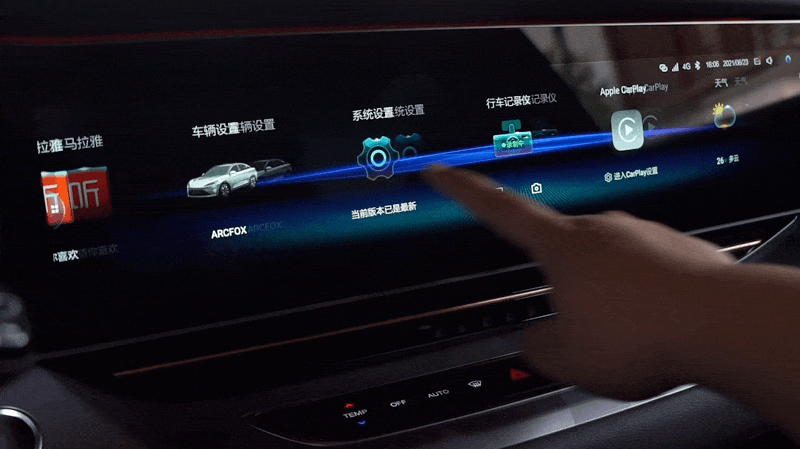
-
The system supports split-screen operation between the driver and the front passenger, allowing for two applications to be opened simultaneously.
-
The content on the central screen of the driver and front passenger can be switched by sliding with two fingers.
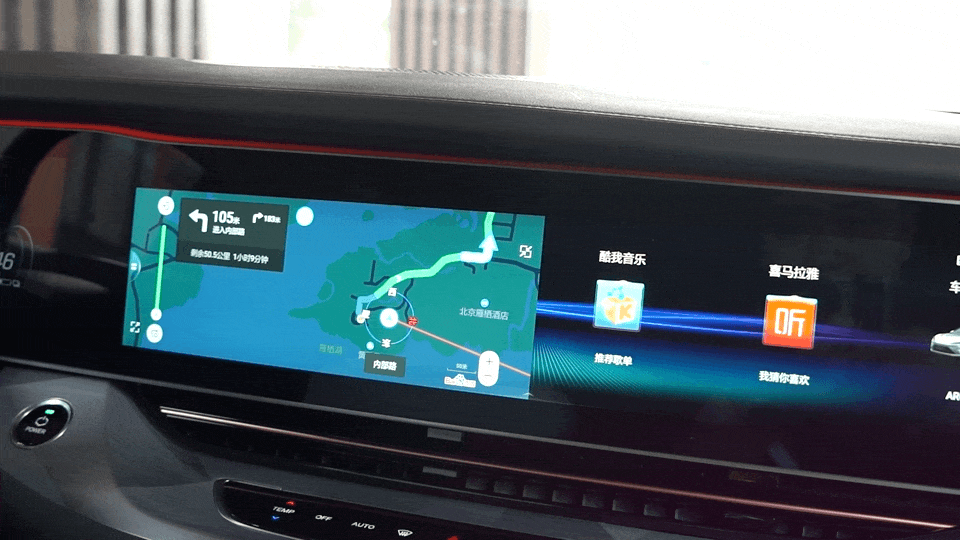
-
The air outlet of the front air conditioning can be selected by tapping, allowing for quick adjustment of the air flow direction.
-
The content ecosystem includes Kuwo Music (most songs require VIP), Baidu Maps, Baidu CarLife, Ximalaya, etc., which is relatively comprehensive and can meet the daily driving needs.
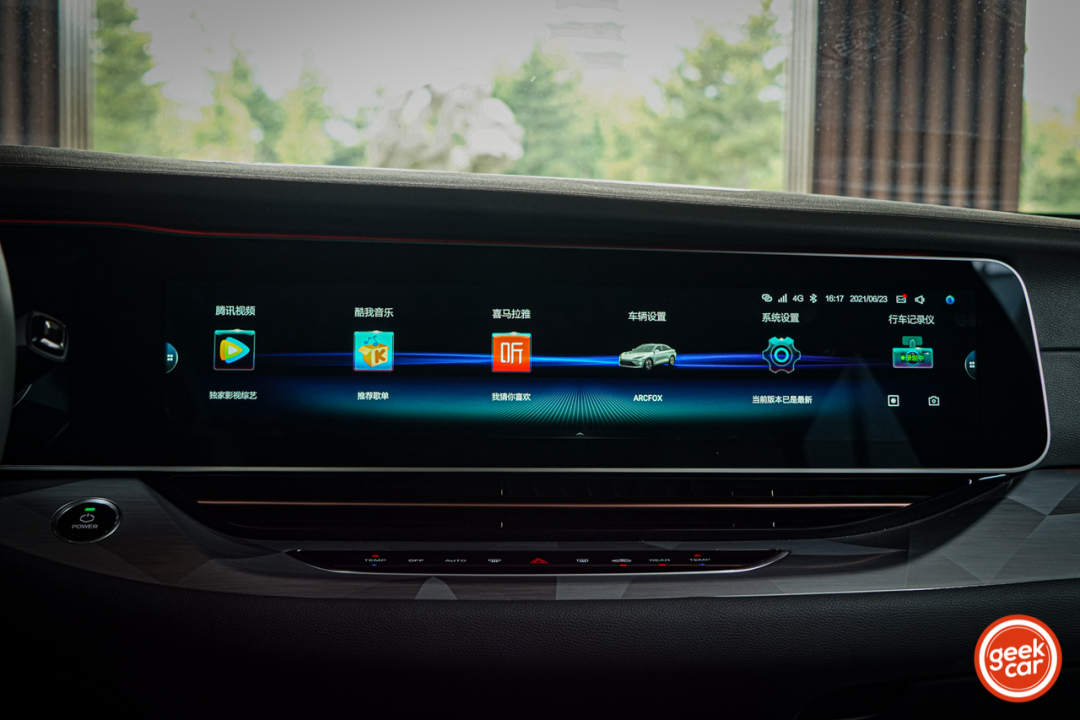
-
The voice recognition supports multiple dialect recognition, with a high recognition rate and fast execution, but does not support interruption or context understanding.
-
Although the car infotainment system has comprehensive application functions, it still supports Baidu CarLife and wireless Apple CarPlay for mobile phone projection.
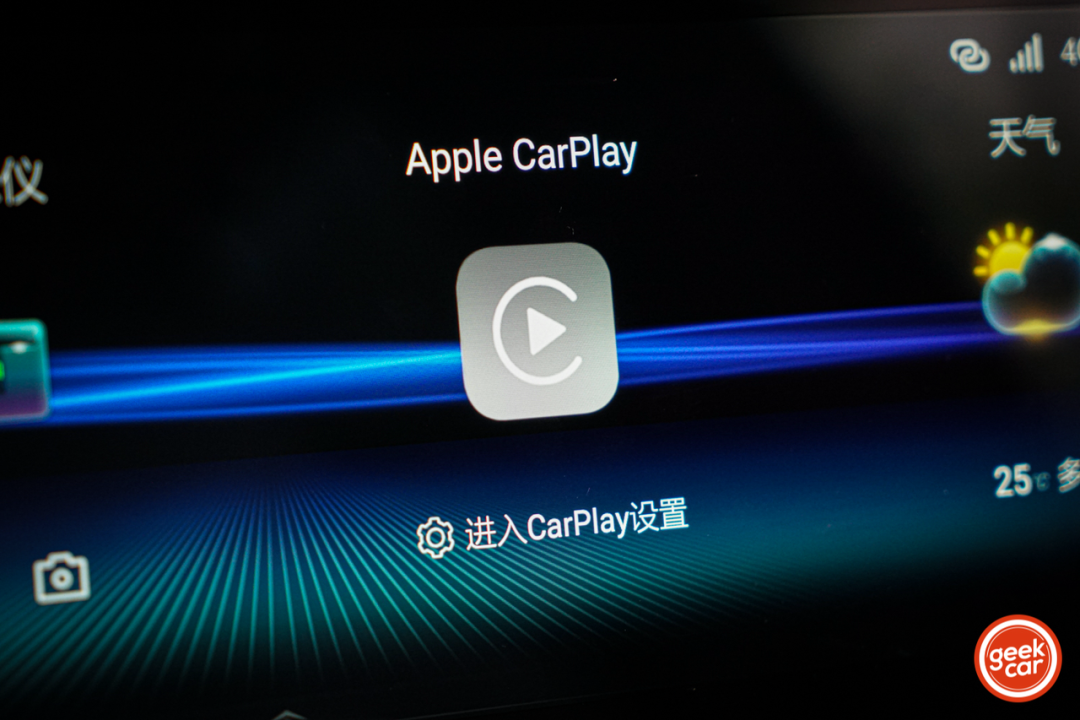
The only downside of the experience is that due to the thin and elongated ratio of the central screen, the viewing experience of videos is not as good as holding an iPad.
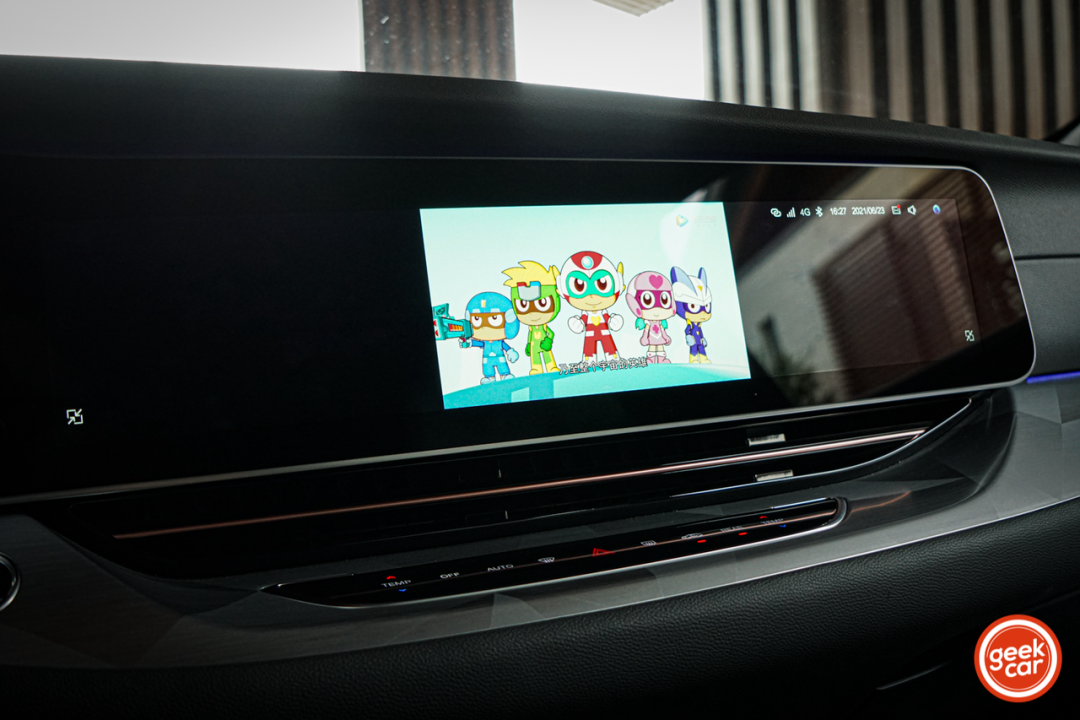
However, overall, in terms of interaction design and content ecosystem, it is considered a practical intelligent cabin.
Range and Driving Experience
In this section, let’s talk about range first. Before departure, our remaining range is 575 km, the trip meter has been reset, there are four male passengers in the car, the driving mode is Comfort, the air conditioning is set to 20 degrees Celsius, and the air flow is at level 2.
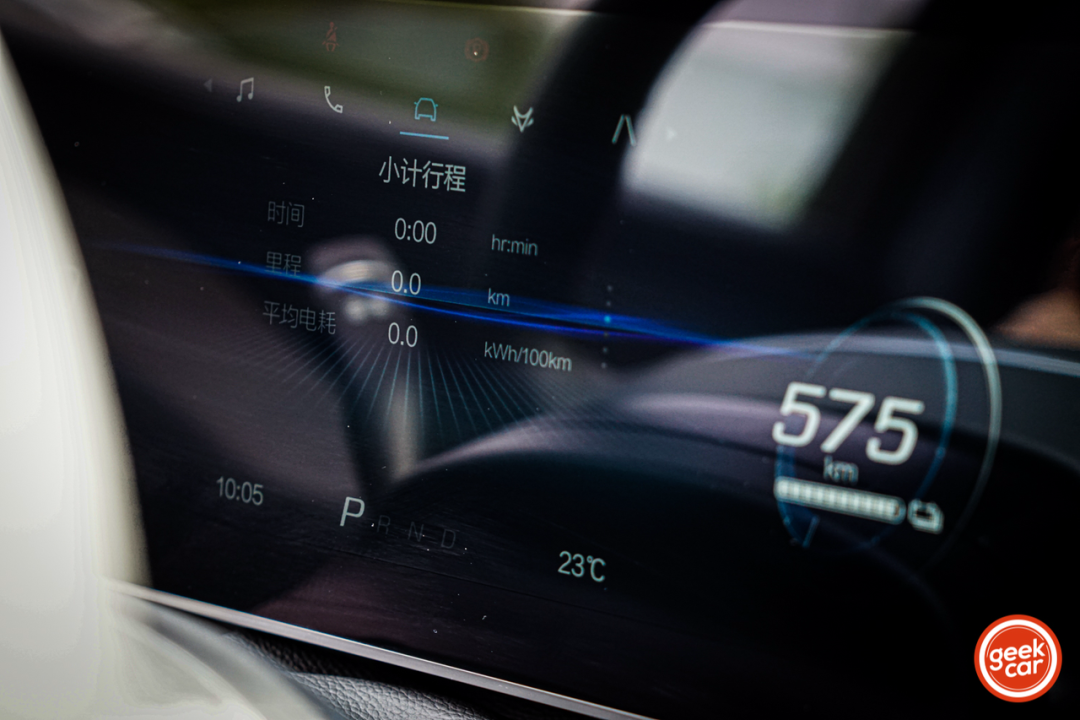 The first half of the journey consisted of over 50% mountain roads. Upon reaching the first checkpoint, we had driven 93.1 km, had 498 km of remaining range, and an average energy consumption of 15.8 kWh/100 km.
The first half of the journey consisted of over 50% mountain roads. Upon reaching the first checkpoint, we had driven 93.1 km, had 498 km of remaining range, and an average energy consumption of 15.8 kWh/100 km.
-
The route consisted of 50% mountain roads and 50% city driving. We drove approximately 93 km and only consumed 77 km of actual range.
-
With an average energy consumption of 15.8 kWh/100 km, and a battery capacity of 93.6 kWh, we could drive approximately 592 km in actual range.
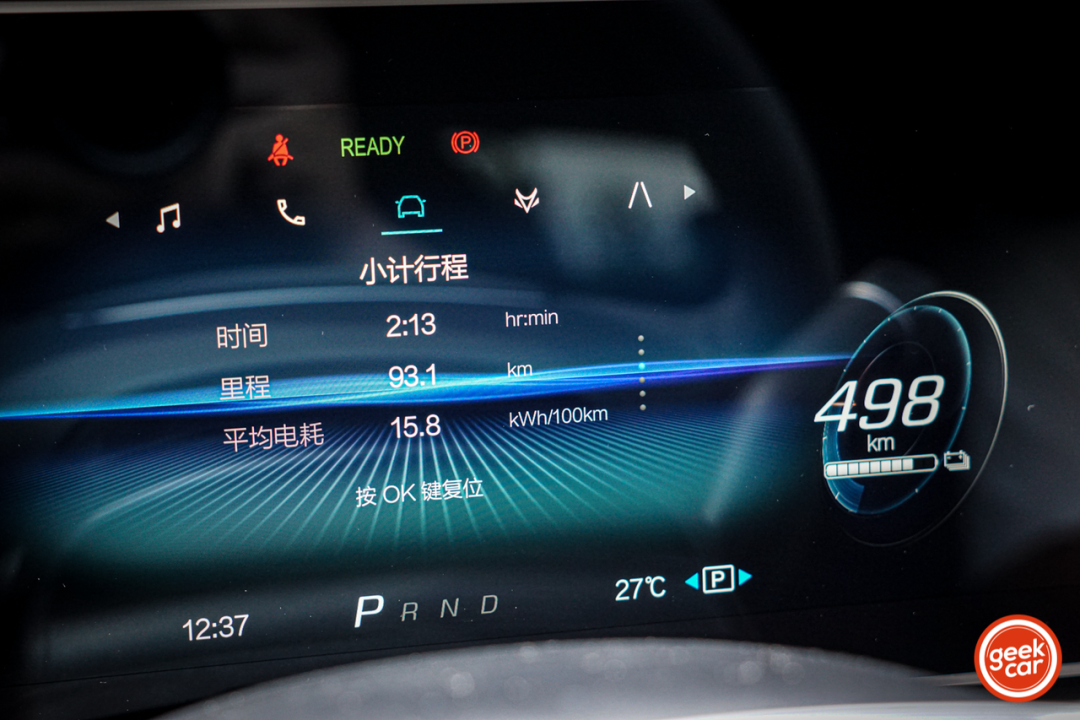
Upon reaching the destination, we had driven a total of 134.9 km, had 448 km of remaining range, and an average energy consumption of 17 kWh/100 km.
-
The route consisted of 25% mountain roads and 75% city driving. We drove 134.9 km and only consumed 127 km of actual range.
-
With an average energy consumption of 17 kWh/100 km, and a battery capacity of 93.6 kWh, we could drive approximately 550 km in actual range.
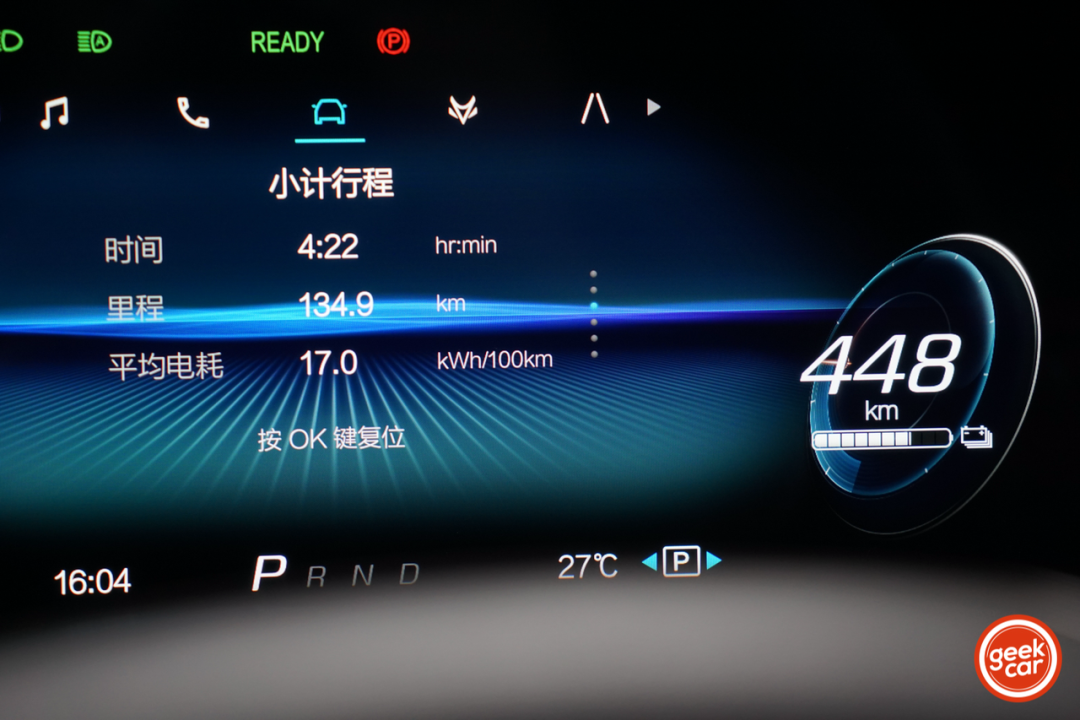
From the data, some information was obtained. Based on the energy consumption calculation, it is difficult to achieve a range consumption smaller than the actual driving range. This may have two reasons:
-
The initial displayed range information may not be accurate, and the energy consumption and range may be significantly reduced in later stages (the road was 100% city after the first checkpoint, but the energy consumption increased).
-
The conversion efficiency of regenerative braking is very good…
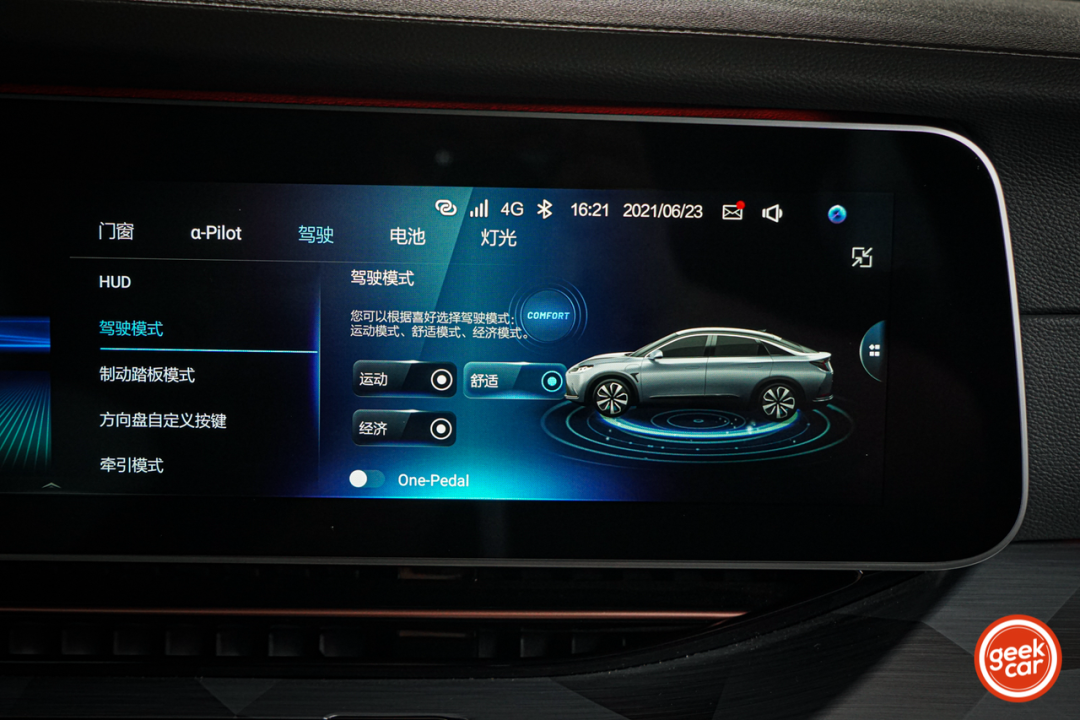
Of course, this test drive was only a little over 130 km. To determine the actual performance of the range, more testing needs to be done.
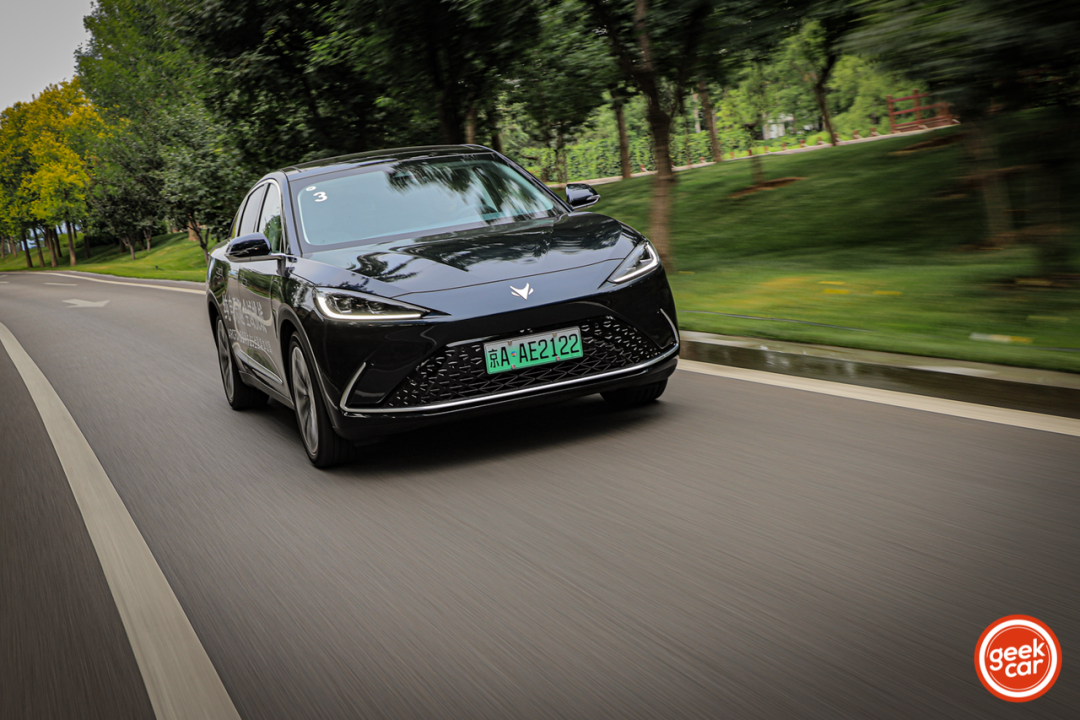
In terms of driving, the ARCFOX Alpha S adopts a chassis tuned by Magna, which should be the best electric car chassis I have driven in 2021. The ARCFOX Alpha S has excellent shock absorption on speed bumps and bumpy roads, and the suspension can show its sufficient support and resilience in cornering and emergency lane changes.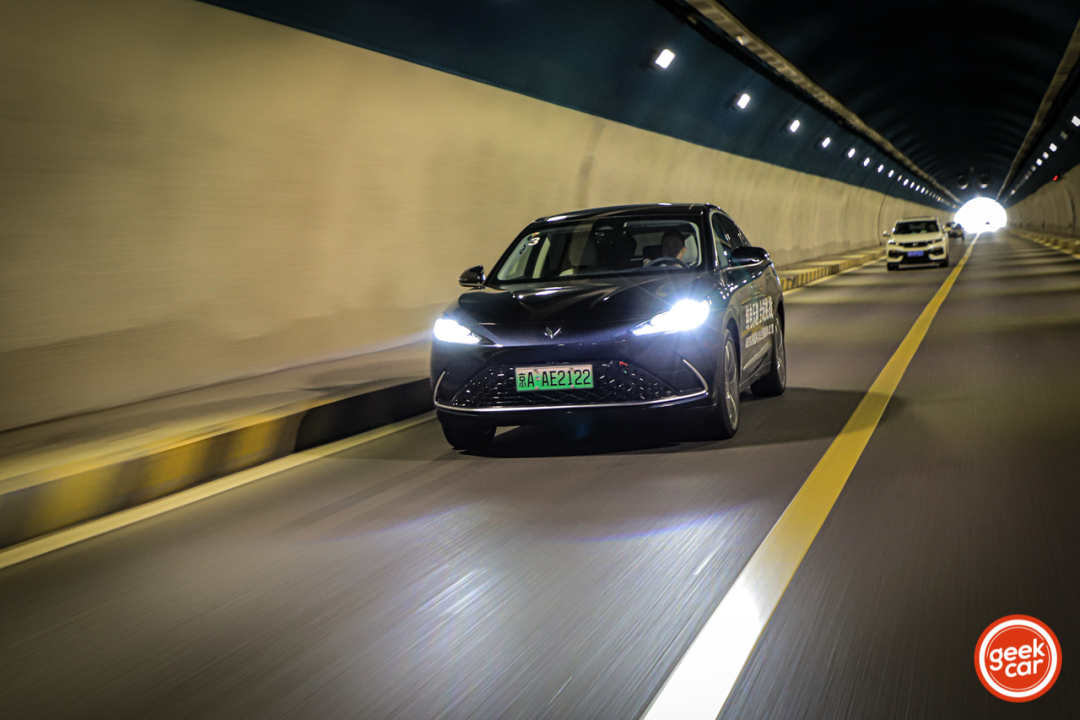
In Sport mode, the accelerator pedal becomes very responsive and direct, with the ability to jump start. It can handle all driving scenarios with its 4.2 second 0-100 km/h acceleration capability. Even for daily use, Comfort mode may have a bit too much power.
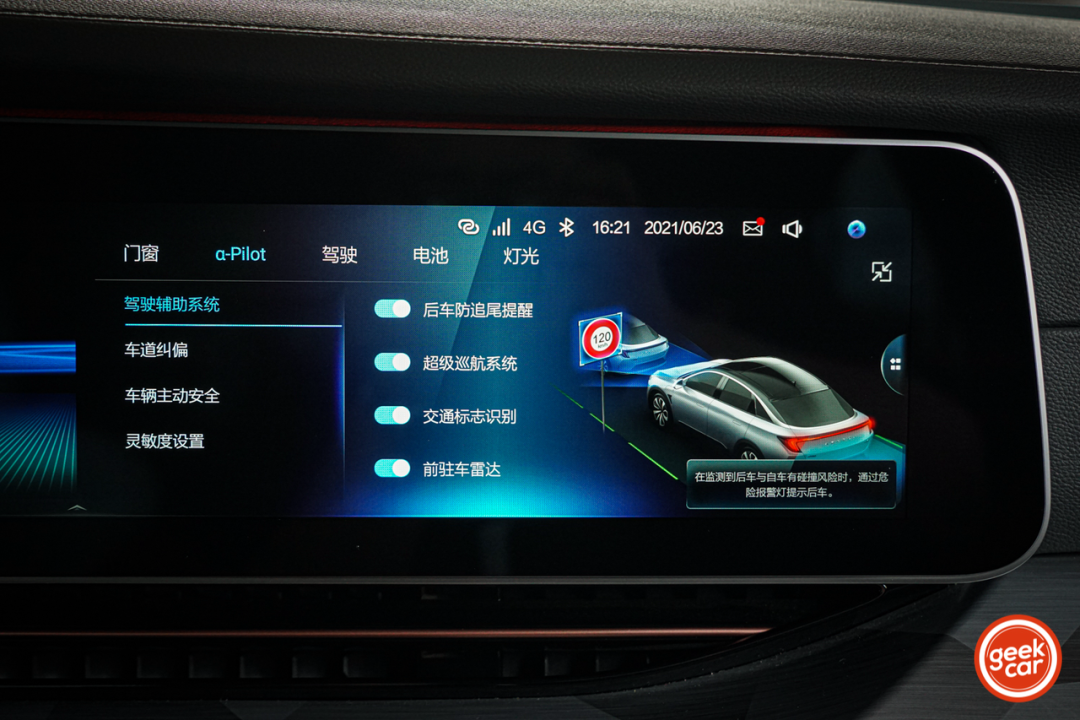
Overall, the driving experience is good, with smooth following and braking. The downside is that it cannot stay centered while turning, tending to get too close to the outer lane line.
As for the riding experience, there is ample space for both front and rear seats in the ARCFOX Alpha S. Even when I am seated in the back with a height of 180 cm and weight of 100 kg, there is more than two fists of legroom.
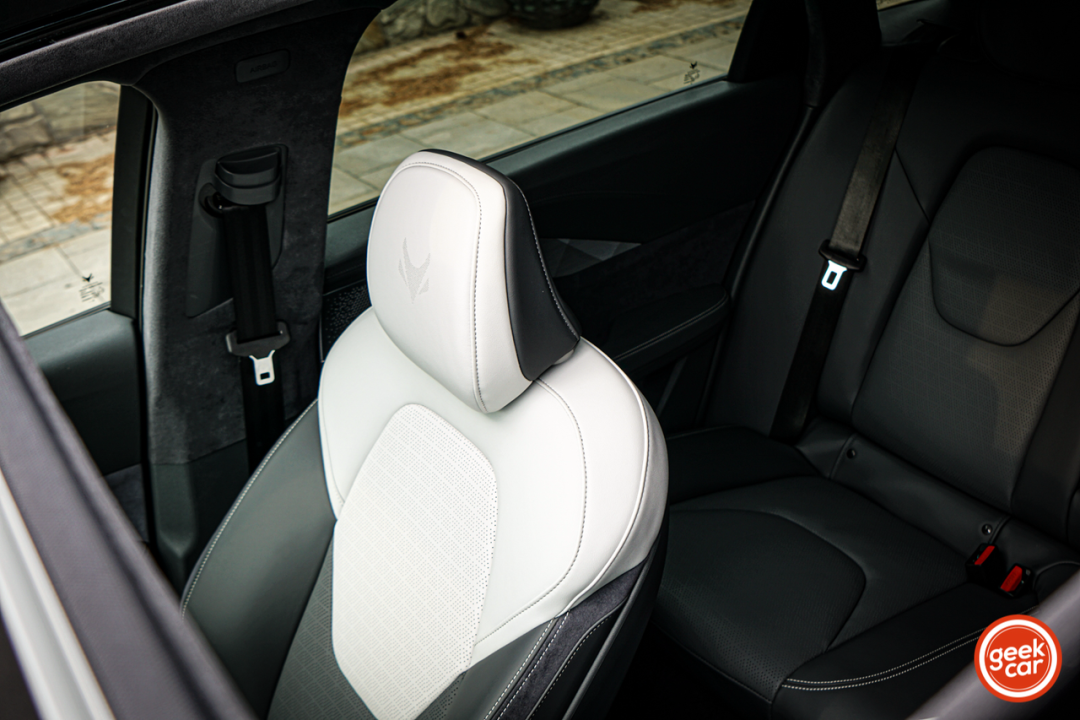
The sunshade of the sunroof adopts a dual-opening design, with the sunshade folding up towards both the front and rear sides, leaving more headroom for the rear seat.
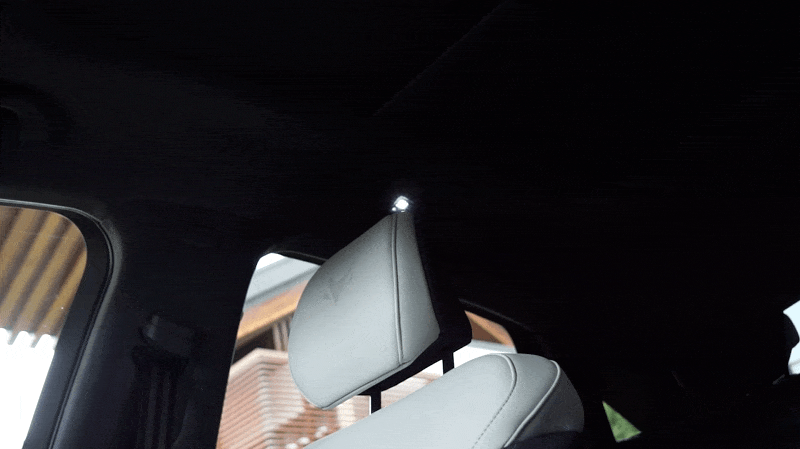
In conclusion
After this experience, I found that the advantages and disadvantages of the ARCFOX Alpha S are very clear:
-
A decent smart cockpit experience;
-
Good driving control, performance, and chassis quality;
-
Good riding space performance;
-
Obvious deviation in driving assistance during turning;
-
As for appearance, beauty is in the eye of the beholder.
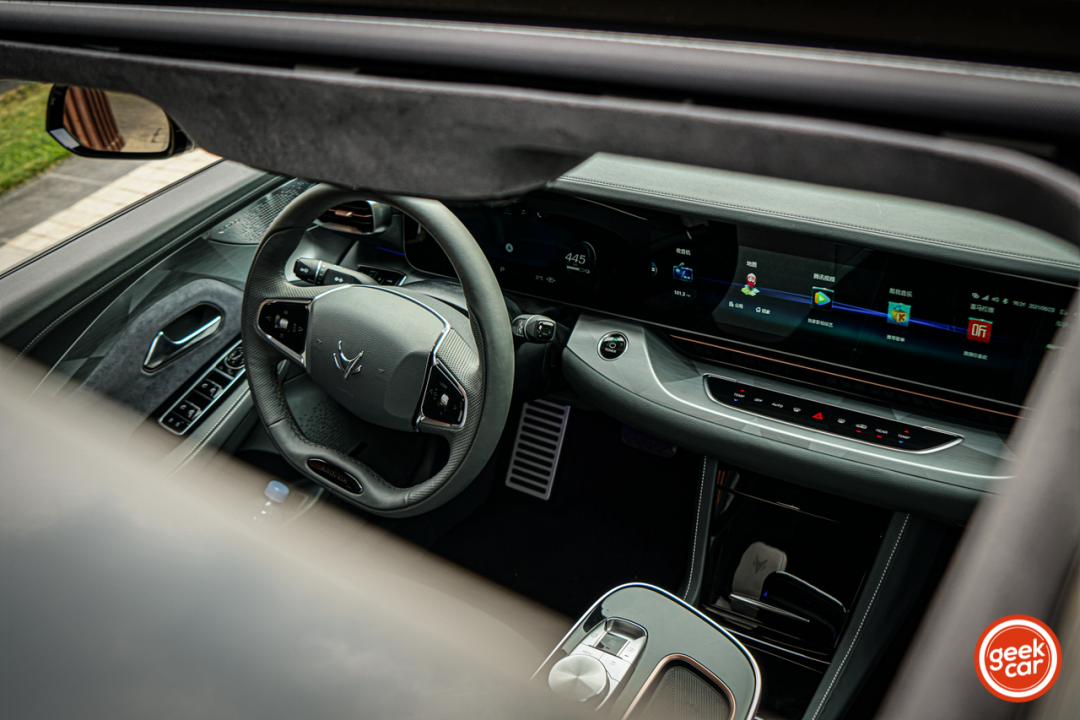
There are not many models directly competing with the ARCFOX Alpha S, only the BYD Han and the ORA iQ. Compared with the BYD Han, the Alpha S is priced higher in the same class, while the ORA iQ is more likely to be a competitive model. Although the ORA iQ is positioned as a pure electric hunting vehicle, it shares similar traits with the ARCFOX Alpha S and falls within the same 5-door, 5-seat hatchback car, price range, and similar body size and proportion.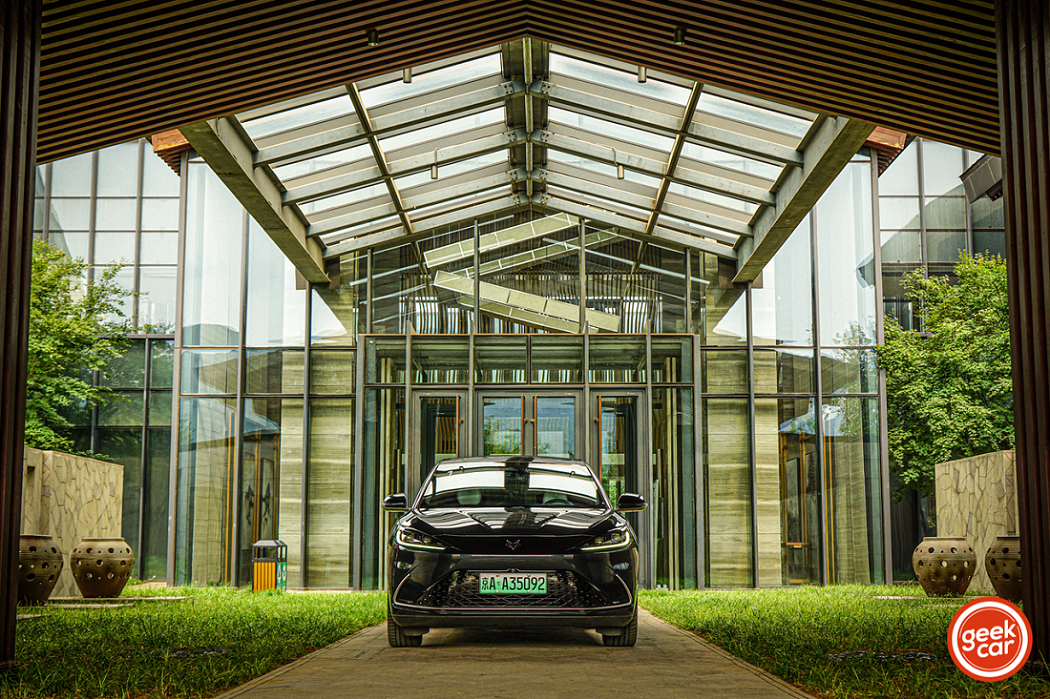
Finally, it’s worth noting that although it’s hard to find traces of BAIC New Energy in the two models by ARCFOX, most consumers still hold on to their previous impressions of BAIC New Energy products. In the current domestic new energy vehicle market, ARCFOX Alpha S possesses sufficient product strength. Despite the fact that the Huawei version of the model has received considerable attention, what ARCFOX needs to do now is to enhance its brand image in the hearts of consumers.
This article is a translation by ChatGPT of a Chinese report from 42HOW. If you have any questions about it, please email bd@42how.com.
